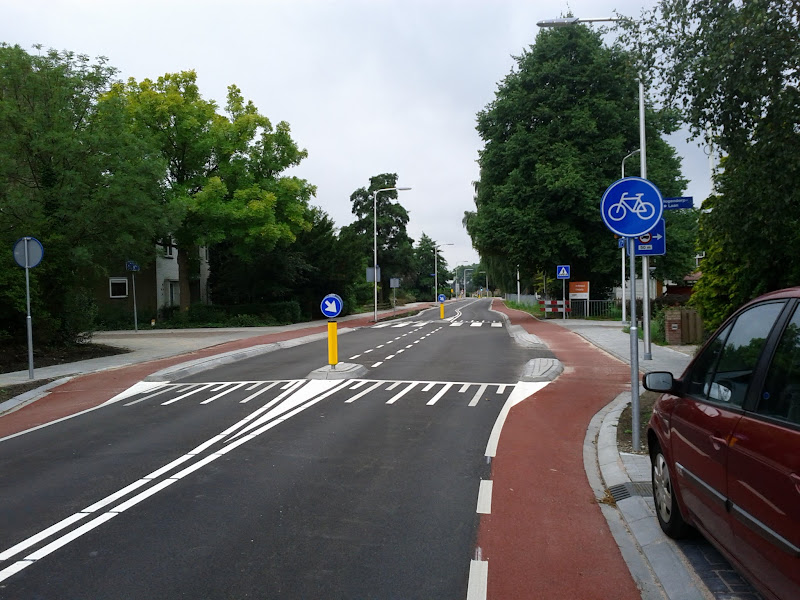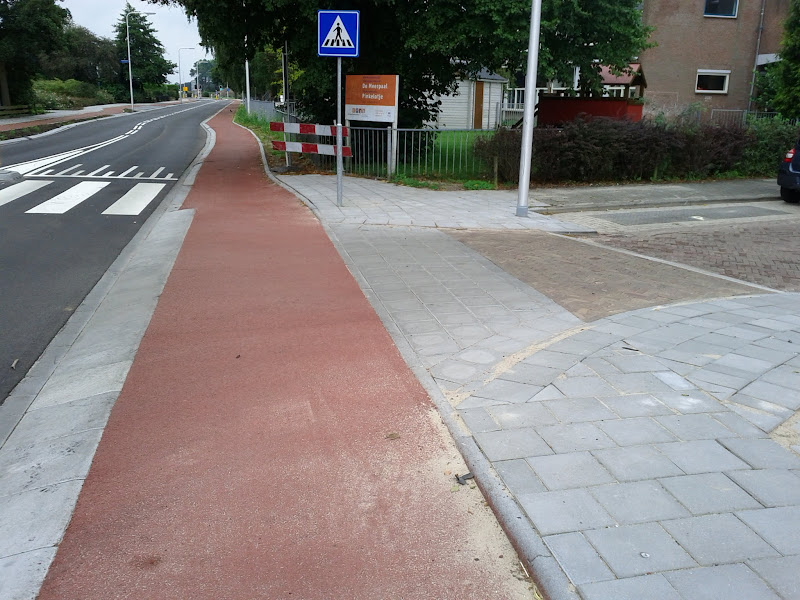Glasgow City Council have acted on my previous complaint to them, on the part about a bollard with a strange bit of jagged, rusty metal on top at the access to the quiet side road off the Broomielaw/A814, by having their cycling officer inspect it. The officer has found that it’s safe – sufficiently at least that no action will be taken it seems. I’ve taken photos of it, to see if anyone else might agree with me…
Posts Tagged Broomielaw
Reducing car/cyclist conflict: Dutch v Glasgow Style
Recently I sent a letter to GCC with some complaints about NCR75. To their credit, they appear to have acted on at least some of that letter (with thanks to Alison Thewliss for raising my letter with GCC LES) – they seem to clean the previously glass-strewn path a lot more often now, and they may have put up more signs to show which paths are meant to be shared-use.
However, regarding the Clydeport car-park entrance on the Broomielaw and how it interrupts and inconveniences the national cycle route that crosses its entrance with a dropped kerb, their response was:
At the Broomielaw, National Cycle Route 75 is located on the north side of the Casino, using a shared use pedestrian/ cycle track. Drivers exiting the Clydeport car park have poor sightlines, hence the kerbs nearest the wall on the cycle track have not been dropped, thus encouraging cyclists to stay away from this area, where they are harder to see.
Now, bear in mind this is an almost unused car-park – I’ve never seen a car going in or out there, even though I commute past there every morning and evening. The cycle-path there on the other hand is heavily used. Further, the kerb, though lower toward the outside, is still a raised kerb and an impediment to cycling! Never mind the road surface is also broken up to at least one side.
So the message is, when it comes down to the convenience of a large number of cyclists, versus that of a property holding company and its under-utilised, city centre car park for a couple of employees, well the cyclists can more or less go and get stuffed.
Update: Went past the Clydeport car-park later in the day today and it does seem full.

Entrance to the Clydeport car-park on the Broomielaw, with the National Cycle Route 75 crossing it. The cycle-path has a dropped kerb, very inconvenient for cyclists, particularly any carrying luggarge, and any on normal, non-offroad bikes. Note the cyclists having to stand up to negotiate the kerbs, even though they are out from entrance. Still looks like urban mountain-biking, sadly.

Another view of the car park entrance. Note that cars actually have plenty of visibility to this direction. It is only the wall on the other side that is impeding visibility. Note also the broken surface of the road, making the far kerb even harder to negotiate.
It is actually quite possible to engineer minor side-streets and entrances that must cross cycle-paths so that cyclists progress and safety is not compromised. They manage it all the time in the Netherlands. The line-of-sight issue could be better resolved by modifying the wall, and/or installing a lowish, progressive projection/kerb around the entrance wall to ensure cyclists move further out (indeed, this would be a good idea either way). Further, it should be Clydeports’ responsibility to ensure that its property does not impose undue risks on the passing public. At least, I would hope there is legislation and/or by-laws in place, to that effect.
So how do the dutch do it?

Dutch cycle-lane, with a minor-side-street junction. The junction is engineered to safely allow cyclists on the busier street the right of way over the quieter joining entrances. Note the conspicuous signage to remind drivers of the cycle lane, and note the concrete segregation barriers immediately before the junction, to prevent car drivers from turning in fast and early.

Note how the road is further engineered to slow down any cars before they cross the cycle lane, and so reduce conflicts. The cycle lane is raised up slightly with a smooth gradient, while the roads have a steeper kerb to negotiate, to force them to slow down and further help make them aware of the cycle lane.